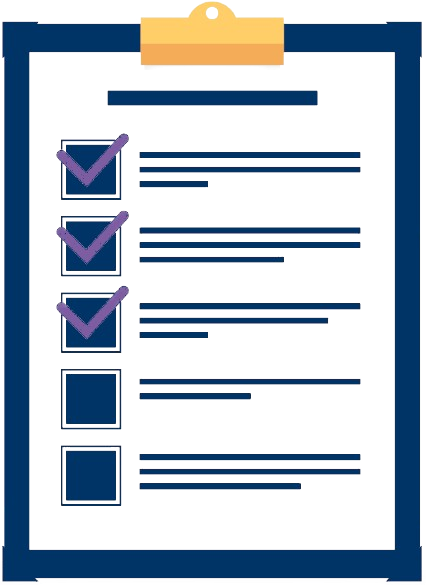Suggestions based on the Question and Answer that you are currently viewing
Why do the accounting standards require absorption costing for financial reporting?
How does a confidence shock differ from the idea of confidence as an amplifier?
What effect does intraperiod tax allocation have on reported net income?
Randy has found conflicting authorities that address a research question for one of his clients. The majority of the authorities provide an unfavorable answer for his client. According to Randy’s estimates, if the client takes the more favorable position on its tax return, then there is approximately a 48 percent chance that the position will be sustained upon audit or judicial proceeding. If the client takes this position on its tax return, will Randy be subject to penalty? Will the client potentially be subject to penalty?
In what way is the Securities and Exchange Commissionconcerned about and supportive of accounting principles and standards?
On January 1, 2014, Cage Company contracts to lease equipment for 5 years, agreeing to make a payment of $137,899 (including the executory costs of $6,000) at the beginning of each year, starting January 1, 2014. The taxes, the insurance, and the maintenance, estimated at $6,000 a year, are the obligations of the lessee. The leased equipment is to be capitalized at $550,000. The asset is to be depreciated on a double-declining-balance basis, and the obligation is to be reduced on an effective-interest basis. Cage’s incremental borrowing rate is 12%, and the implicit rate in the lease is 10%, which is known by Cage. itle to the equipment transfers to Cage when the lease expires. The asset has an estimated useful life of 5 years and no residual value. Instructions (a) Explain the probable relationship of the $550,000 amount to the lease arrangement. (b) Prepare the journal entry or entries that should be recorded on January 1, 2014, by Cage Company. (c) Prepare the journal entry to record depreciation of the leased asset for the year 2014. (d) Prepare the journal entry to record the interest expense for the year 2014. (e) Prepare the journal entry to record the lease payment of January 1, 2015, assuming reversing entries are not made. (f) What amounts will appear on the lessee’s December 31, 2014, balance sheet relative to the lease contract?
} Reese, a calendar-year taxpayer, uses the cash method of accounting for her sole proprietorship. In late December she received a $20,000 bill from her accountant for consulting services related to her small business. Reese can pay the $20,000 bill any time before January 30 of next year without penalty. Assume Reese’s marginal tax rate is 30 percent this year and will be 40 percent next year, and that she can earn an after-tax rate of return of 12 percent on her investments. When should she pay the $20,000 bill—this year or next?
Crowe Company purchased a heavy-duty truck on July 1, 2011, for $30,000. It was estimated that it would have a useful life of 10 years and then would have a trade-in value of $6,000. The company uses the straight-line method. It was traded on August 1, 2015, for a similar truck costing $42,000; $16,000 was allowed as trade-in value (also fair value) on the old truck and $26,000 was paid in cash. A comparison of expected cash flows for the trucks indicates the exchange lacks commercial substance. What is the entry to record the trade-in?
Question: No Doubt Company includes 1 coupon in each box of soap powder that it packs, and 10 coupons are redeemable for a premium (a kitchen utensil). In 2014, No Doubt Company purchased 8,800 premiums at 80 cents each and sold 110,000 boxes of soap powder at $3.30 per box; 44,000 coupons were presented for redemption in 2014. It is estimated that 60% of the coupons will eventually be presented for redemption. Instructions Prepare all the entries that would be made relative to sales of soap powder and to the premium plan in 2014.
Explain why financial markets may be less liquid if companies are not forced to provide accurate financial reports. (LO3)
Shanahan Construction Company has entered into a contract beginning January 1, 2014, to build a parking complex. It has been estimated that the complex will cost $600,000 and will take 3 years to construct. The complex will be billed to the purchasing company at $900,000. The following data pertain to the construction period. 2014 2015 2016 Costs to date $270,000 $450,000 $610,000 Estimated costs to complete 330,000 150,000 –0– Progress billings to date 270,000 550,000 900,000 Cash collected to date 240,000 500,000 900,000 Instructions (a) Using the percentage-of-completion method, compute the estimated gross profit that would be recognized during each year of the construction period. (b) Using the completed-contract method, compute the estimated gross profit that would be recognized during each year of the construction period.
Assembly of a product requires that a component part be ordered and stocked. Demand for the product is constant throughout the year at 7800 units annually. The cost to place an order is $95. The cost of the part is $56 and the holding cost rate is 22%. When units are ordered, they take two weeks to arrive. Determine (a) the economic order quantity and (b) the reorder point. (c) The parts are prepackaged in multiples of 100. It saves the supplier unpacking and repackaging time if they can ship in multiples of 100. The supplier has offered to reduce the price by $1 per unit if even multiples of 100 are purchased. How much would be saved (if anything) by taking this offer?
1. The following table shows data for a monopsonist employer. Fill in the missing figures. How many workers should the firm employ if it wishes to maximise profits? 2. Will a monopsony typically also be a monopoly? Try to think of some examples of monopsonists that are not monopolists, and monopolists that are not monopsonists.
Whiteside Corporation issues $500,000 of 9% bonds, due in 10 years, with interest payable semiannually. At the time of issue, the market rate for such bonds is 10%. Compute the issue price of the bonds.
Identify the main categories of plastics shaping processes, as classified by the resulting product geometry.
What happens to an elastomer when it is below its glass transition temperature?
{Research} For the following independent cases, determine whether economic income is present and, if so, whether it must be included in gross income. Identify a tax authority that supports your analysis. Hermione discovered a gold nugget (valued at $10,000) on her land. b. Jay embezzled $20,000 from his employer and has not yet been apprehended. c. Keisha found $1,000 inside an old dresser. She purchased the dresser at a discount furniture store at the end of last year and found the money after the beginning of the new year. No one has claimed the money.
Describe a wheel ring test.
Are variable-rate bonds attractive to investors who expect interest rates to decrease? Explain. Would a firm that needs to borrow funds consider issuing variable-rate bonds if it expects interest rates to decrease in the future? Explain. (LO2)
Cost drivers; value chain; strategy; organisational structure Australian fashion designer Sean Ashby commenced his men’s swimwear and clothing business aussieBum in 2001. A keen swimmer and surfer, he was unable to find a good pair of men’s cossies and used his life savings of $20 000 to make a series of prototypes, buy materials and commence manufacturing in Australia. Despite rejection from local retailers who did not see the potential for aussieBum to compete with international brands, Ashby has proven critics wrong. He had no choice but to take his business online, with instant exposure to the international market. It now takes thousands of orders a day. Since the company’s inception, Ashby says that aussieBum has ‘taken on its own little cult revolution’, with celebrities such as Ewan McGregor, Billy Connolly and David Beckham fans of the aussieBum brand. Even Kylie Minogue’s male dancers wore aussieBum cossies in the film clip for her song ‘Slow’. The marketing thrust behind Ashby’s aussieBum is to live the dream — ‘the dream to be independent and present our gear in a way that gets noticed. We don’t apologise for pushing the boundaries . . . We have a saying at aussieBum — If you doubt yourself, wear something else’. The company doubled in size every year in its first five years and continued to grow by 20 per cent every quarter. By 2005, aussieBum earned more than $5 million in sales and carried no debt. The aussieBum brand now takes pride of place in stores such as Selfridges in the UK; Brown Thomas in Ireland; La Maison Stores in Canada; Alpha Male in Melrose Drive, Los Angeles; KaDeWa in Germany; as well as others in Spain, The Netherlands, Sweden, Poland and Russia. As well as direct department store sales, aussieBum’s internet retail orders are booming, with aussieBum being distributed to more than 70 countries. It now has over 200 000 consumers ordering direct via its custom built e-commerce site. Most of the raw materials are sourced from Italy and China. By manufacturing in Australia, aussieBum hopes to promote Australia’s culture and relaxed lifestyle as well as eliminate restrictions that might come with outsourcing production to other countries. Moreover, producing locally (through independent manufacturers) provides flexibility and a reduced timeframe in getting new products to market. With a heavy emphasis on innovative product design, aussieBum pays close attention to the design phase of the product process. Two recent examples of aussieBum’s flexibility and innovative approach to product development and marketing are worthy of note. First, it was able to capitalise on the consumer backlash against competitor Bonds when that company transferred more of its manufacturing offshore. Ashby estimates that aussieBum’s sales grew by at least 40 per cent as a result. Second, aussieBum was able to achieve continued growth during the global financial crisis. The company continues to avoid debt and own all its assets outright. Required (a) With reference to the information provided, distinguish between structural and executional cost drivers. (b) Illustrate and describe the industry and organisational value chain in which aussieBum operates. (c) Classify aussieBum’s likely strategy as low cost or product differentiation. Explain. (d) Classify aussieBum’s organisational structure as centralised or decentralised. Explain. (e) With reference to disruptive innovation, do you consider aussieBum to be a disruptor to the traditional garment industry value chain? Discuss why or why not.
The dollar-value LIFO method was adopted by Enya Corp. on January 1, 2014. Its inventory on that date was $160,000. On December 31, 2014, the inventory at prices existing on that date amounted to $140,000. The price level at January 1, 2014, was 100, and the price level at December 31, 2014, was 112. Instructions (a) Compute the amount of the inventory at December 31, 2014, under the dollar-value LIFO method. (b) On December 31, 2015, the inventory at prices existing on that date was $172,500, and the price level was 115. Compute the inventory on that date under the dollar-value LIFO method.
Compare and contrast when taxpayers are allowed to deduct the cost of warranties provided by others to the taxpayer (i.e., purchased by the taxpayer) and when taxpayers are allowed to deduct the costs associated with warranties they provide (sell) to others.
Explain how manufacturing overhead cost pools and cost allocation are related.
1. : How has Ken Byers shaped the sales culture at Hull Engineering? Do you consider this culture to be at a preconventional, conventional, or postconventional level of ethical development? Why?
Who are the owners of credit unions? Explain the tax status of CUs and the reason for that status. Why are CUs typically smaller than commercial banks or savings institutions? (LO7)
The benefits of buying with AnswerDone:

Access to High-Quality Documents
Our platform features a wide range of meticulously curated documents, from solved assignments and research papers to detailed study guides. Each document is reviewed to ensure it meets our high standards, giving you access to reliable and high-quality resources.

Easy and Secure Transactions
We prioritize your security. Our platform uses advanced encryption technology to protect your personal and financial information. Buying with AnswerDone means you can make transactions with confidence, knowing that your data is secure

Instant Access
Once you make a purchase, you’ll have immediate access to your documents. No waiting periods or delays—just instant delivery of the resources you need to succeed.
